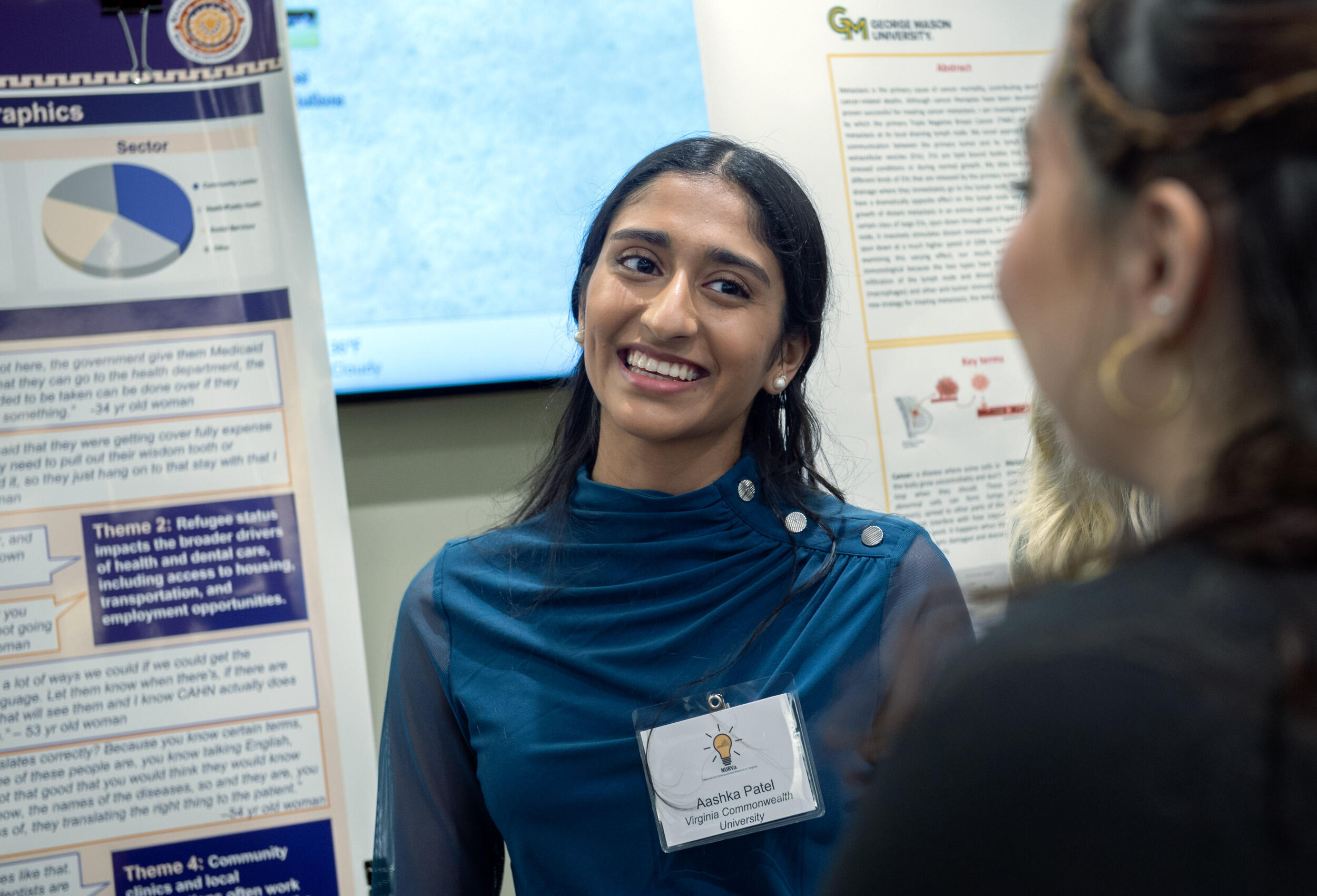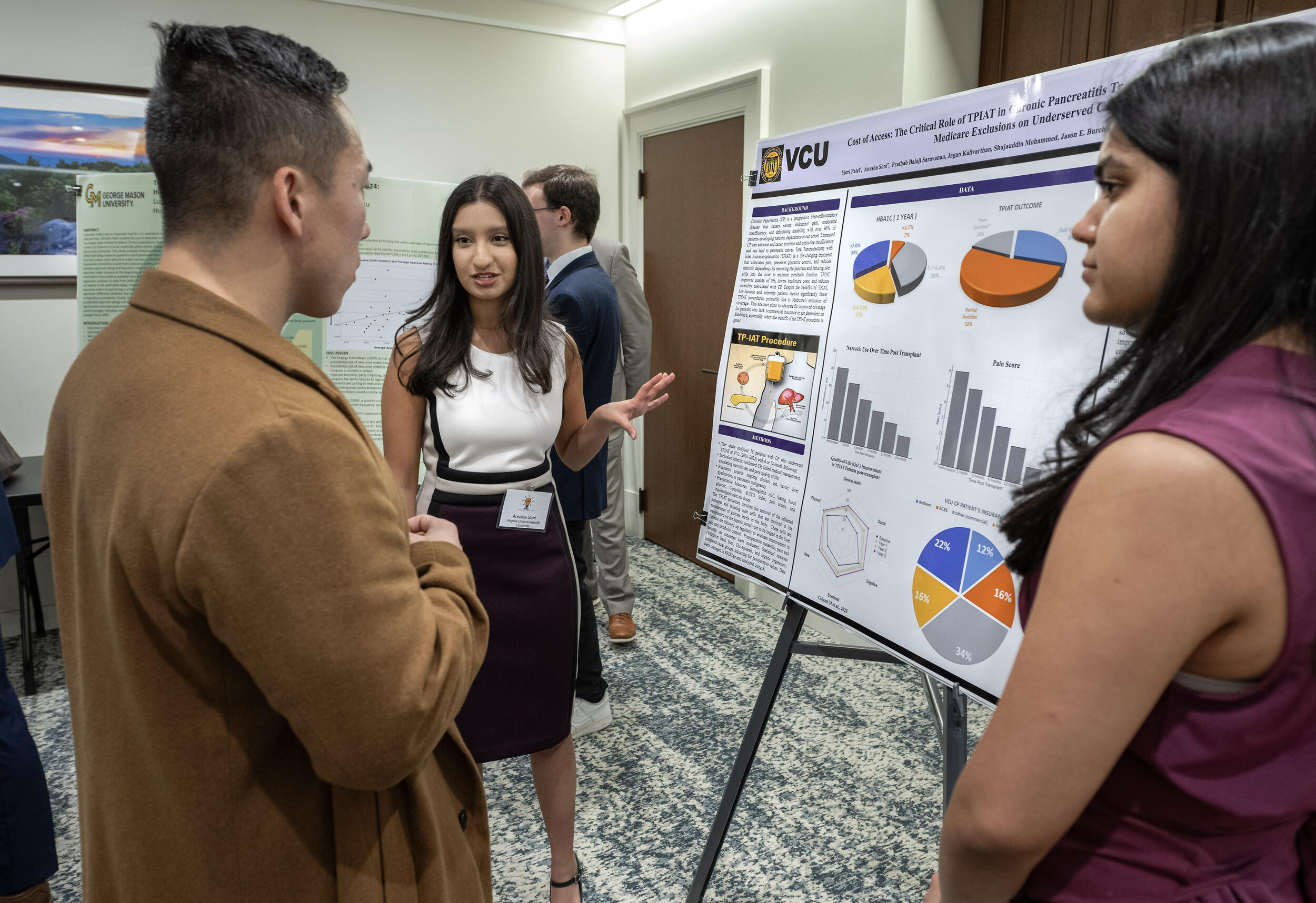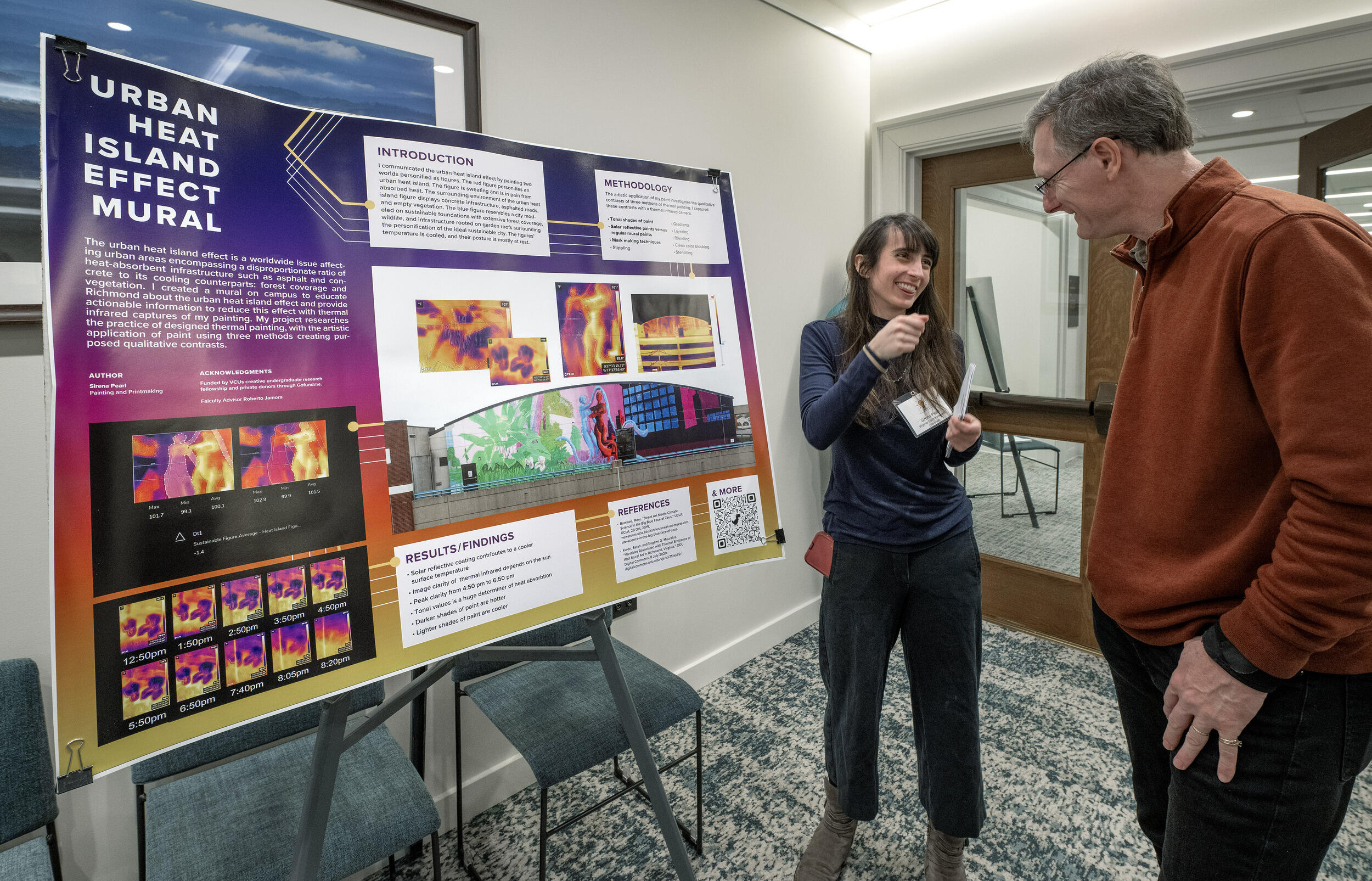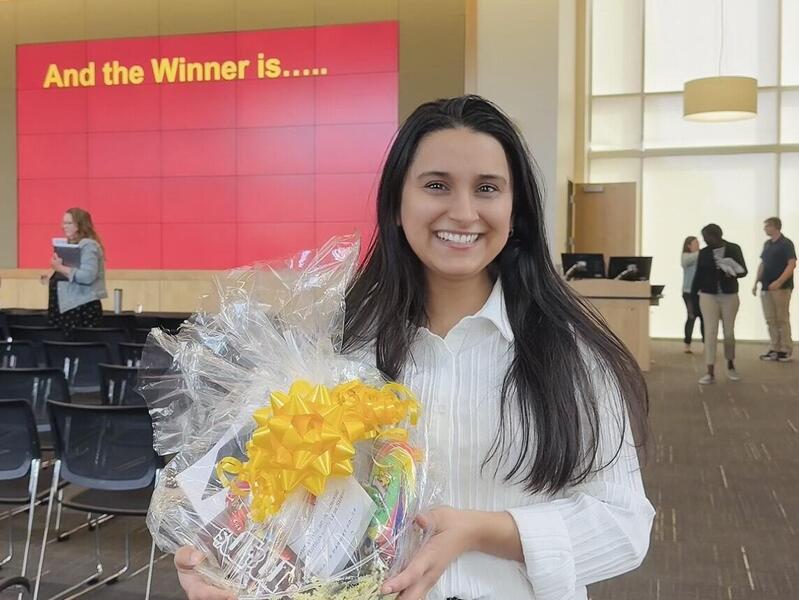
Feb. 12, 2025
Hoping to inspire change, VCU undergraduates highlight their research for Virginia lawmakers
Share this story
Three projects from Virginia Commonwealth University students were featured this month at Capitol Square, where the inaugural showcase from the Network for Undergraduate Research in Virginia offered lawmakers a window into how colleges across the state are addressing a range of society’s challenges.
The NURVa showcase was held Feb. 6 in the General Assembly Building, where lawmakers conduct much of their work during the annual legislative session. Nearly 40 VCU students had entered projects for consideration – a reflection of how the school’s Every Ram’s a Researcher initiative is making transformative learning a hallmark of the undergraduate experience.
Herb Hill, Ed.D., director of undergraduate research and creative inquiry in the Office of the Provost, said that while advocacy of project themes was one goal of the event, so was the larger reflection of NURVa’s mission.
“The student success outcomes from undergraduate research are very significant, very positive,” Hill said. “But also, we want to showcase the type of research that our students are doing in the state because we feel that the research is very relevant to the state. They’re seeking for ways to improve.”
The three VCU projects selected for the event displayed a poster in the General Assembly Building, allowing lawmakers to walk through and engage with researchers.
Aashka Patel, a sophomore studying biology in the College of Humanities and Sciences, highlighted the structural challenges that confront refugees in need of health care.
“A lot of these patients do not have Medicaid after their initial resettlement period, and so after those initial eight months, they don’t have a lot of access to health care,” Patel said. “Even if they do have access to health care, there is a lack of translators, ineffective patient-provider communication – and a lot of these patients, due to the language barrier, don’t even know what health services they’re eligible for.”
She added that the challenges of finding solid employment are connected to refugees’ access to medical care through job-based insurance, and that oral care is further overlooked – which often leads to medical complications.

Sophomore biology major Yatri Patel and freshman biology major Anusha Soni also spotlighted a health issue: treating pancreatitis in underserved communities.
TPIAT – total pancreatic islet auto transplantation – involves removing important cells from the pancreas and injecting them into the liver before the pancreas is removed. “It allows the patient to continue to have the benefits of the pancreas but without the pain and the side effects of the disease,” Soni said.
After TPIAT, the rate of patients on narcotics for pancreatitis fell from 80% to just 20%, according to their research, which points to a higher quality of life and a potential in-road to combat the opioid epidemic.
But insurance often does not cover TPIAT. Soni and Patel want Virginia lawmakers to address the need.
“This procedure is very, very costly,” Patel said. “Medicare does not include TPIAT. … We want to try to see if there’s any type of grant that the state can offer for these patients … so that they do have this as an option and don’t have to live in a lifetime full of pain.”
Sirena Pearl, a junior majoring in painting and printmaking in the School of the Arts, has taken an artistic approach to highlighting climate change. Her mural, atop a VCU parking deck, demonstrates the factors that increase and decrease the urban heat island effect.
The two female figures – a red, sweating figure and a blue, cooler figure with a solar-reflective coating – point to how within cities, some areas are disproportionately affected by higher temperatures.
“The hottest areas that are impacted the most are red-line neighborhoods. They don’t have access to many park spaces or green spaces, which can provide shading and cooling,” Pearl said. “There’s also a lot of asphalt and pavement surfaces, due to disinvestments from racist housing policies.”
Pearl hopes her mural inspires lawmakers to consider the heat island effect when designing urban areas – and how the solar-reflective coating and other creative solutions could make cities cooler.

Subscribe to VCU News
Subscribe to VCU News at newsletter.vcu.edu and receive a selection of stories, videos, photos, news clips and event listings in your inbox.










